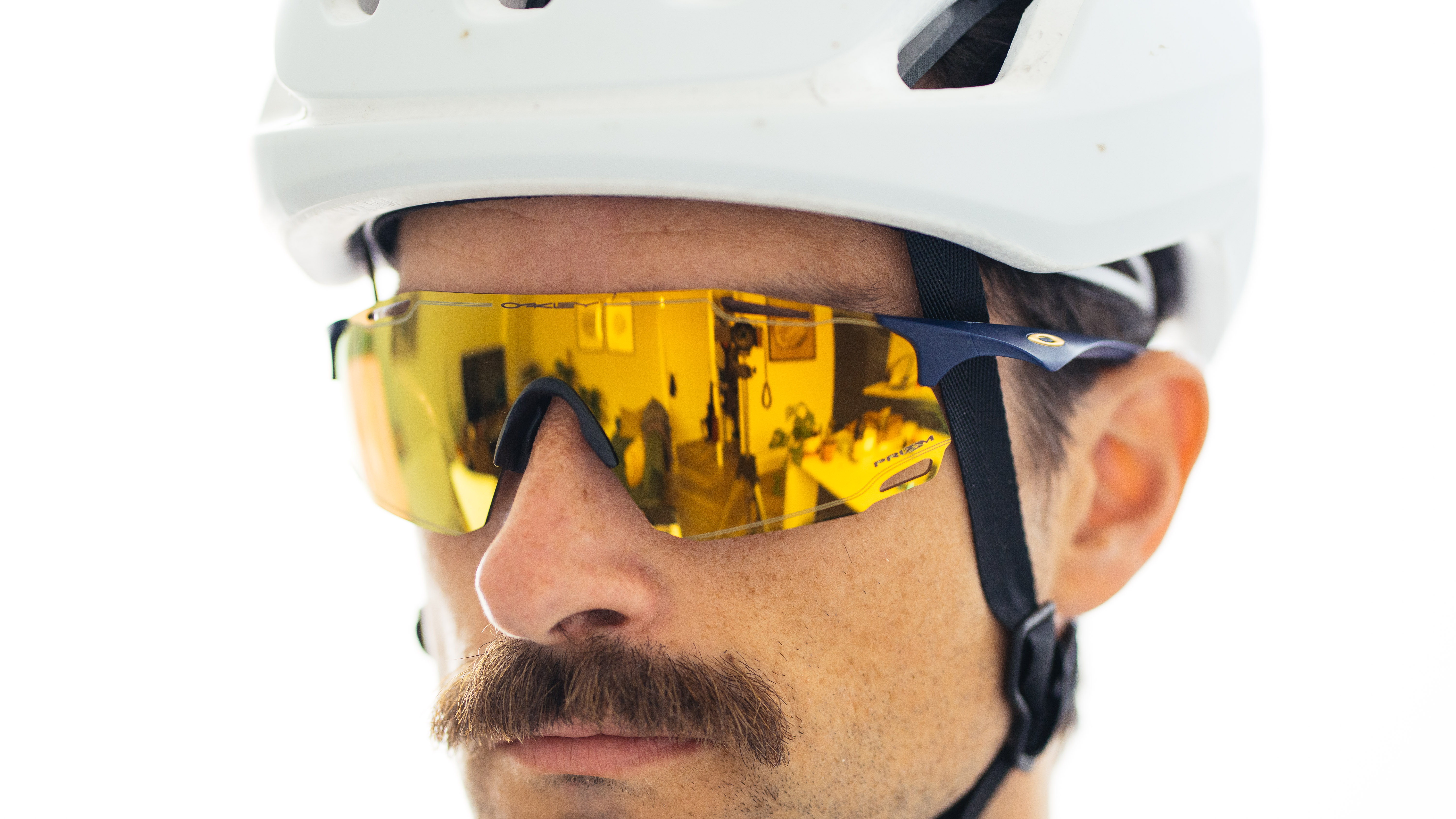
Price: £168 / $214
Weight: 22.4g / 0.79oz
Lens options: Prizm 24k, Prizm Black, Prizm Low Light, Prizm Road, Prizm Sapphire, Clear to black photochromic
Clear lens included: No
Oakley has really been pushing new models out at quite a rate in recent years. When I got into riding, you basically had an old set of M-Frames or a set of Radars. Latterly, the Jawbreaker kind of took over, but that was sort of it for a while.
Now the list of Oakley cycling classes is almost as long as our guide to the best cycling glasses, and potential customers have to work out if they want an Encoder, a Sutro, a Sutro Lite, a Sphaera, a Kato, a Kato Velo, a Radar, a Jawbreaker, an EVZero, or any of the other short term models that pop up.
Recently, Oakley has launched two new models, taking the template of the popular, lightweight and frameless EVZero Blades and adding a bit of design flair to the lenses, in the form of the Cybr Dyno and the Cybr Zero, the former having a fuller lens, and the latter a more sculpted one.
In essence, I’m here to work out if and why you should opt for one over the other, given they are so similar. The short answer is that I found the EVZero slightly better, primarily thanks to more grippy arms, but an awful lot of what was great about the EVZero also rings true for the Cybr Dyno, which I’ve been using these past few weeks in the endless summer of a spring that we’ve been blessed with here in the UK.
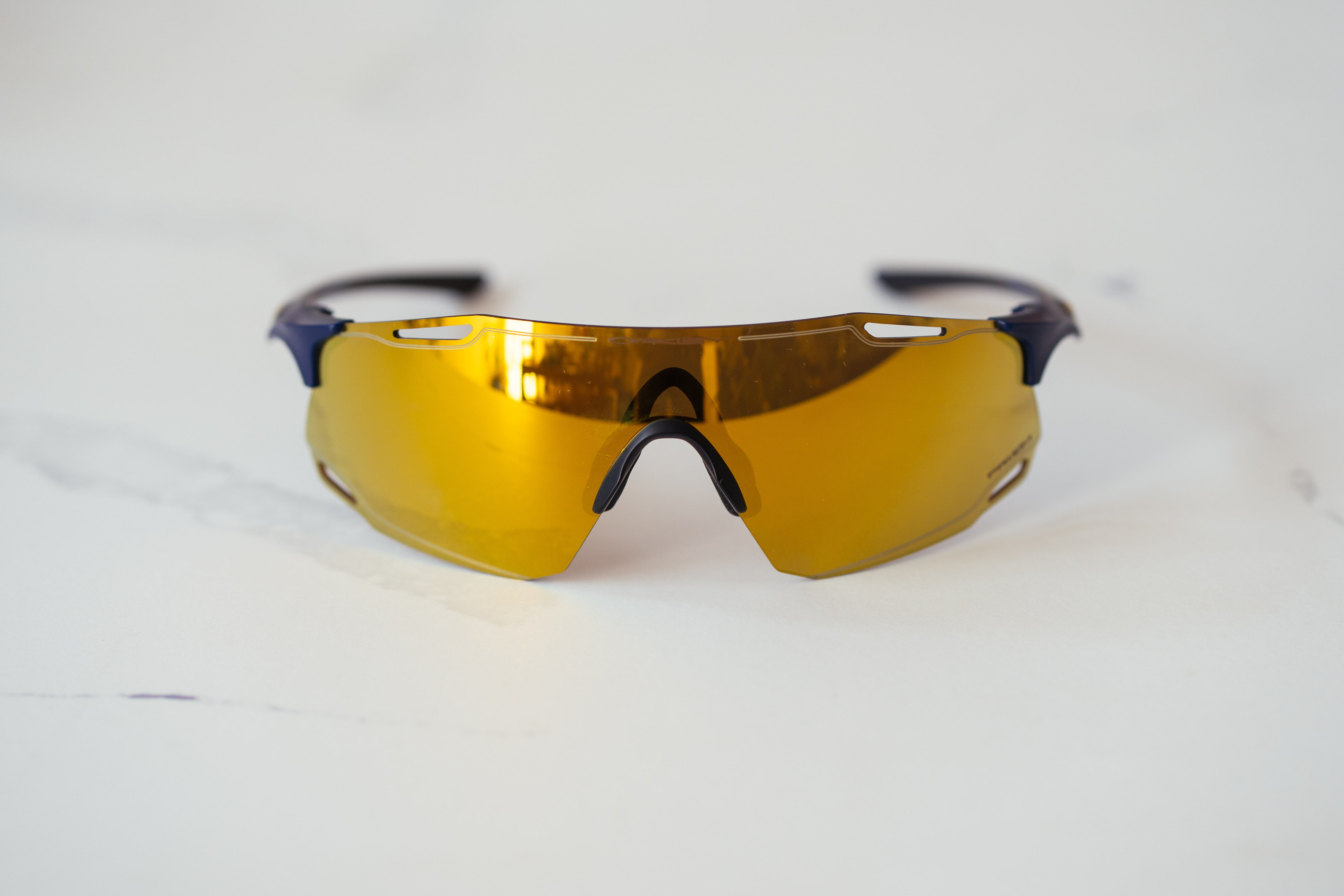
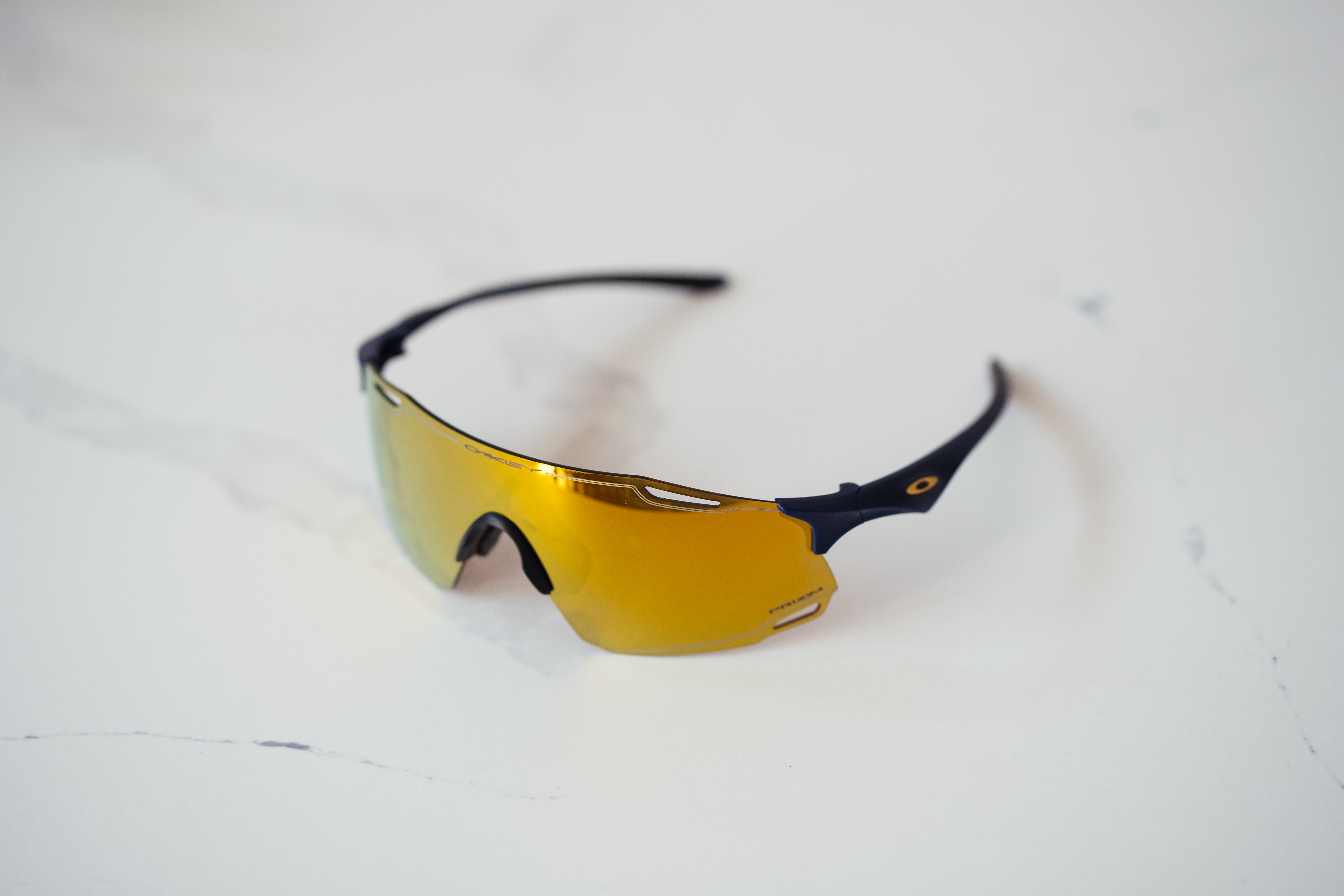

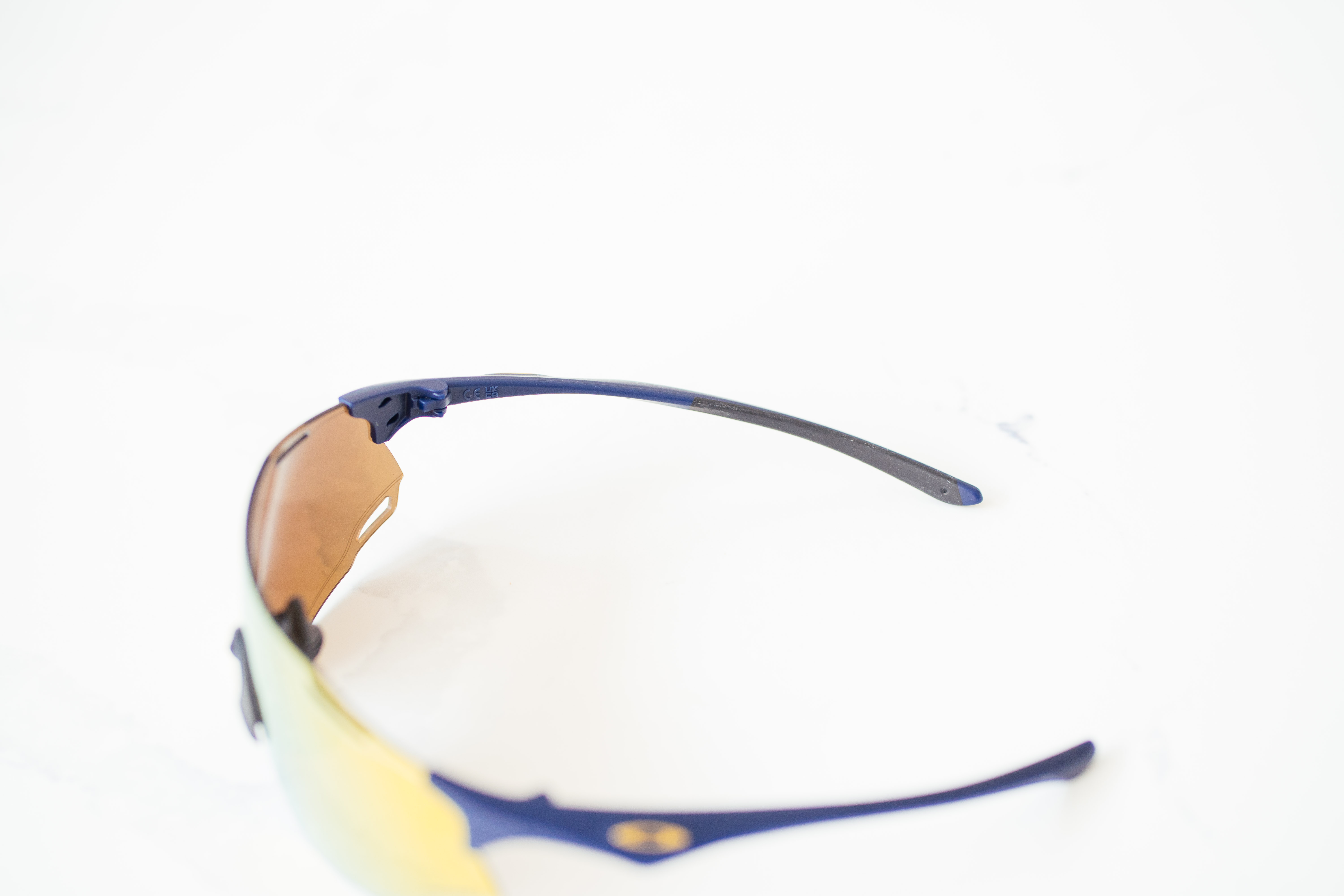
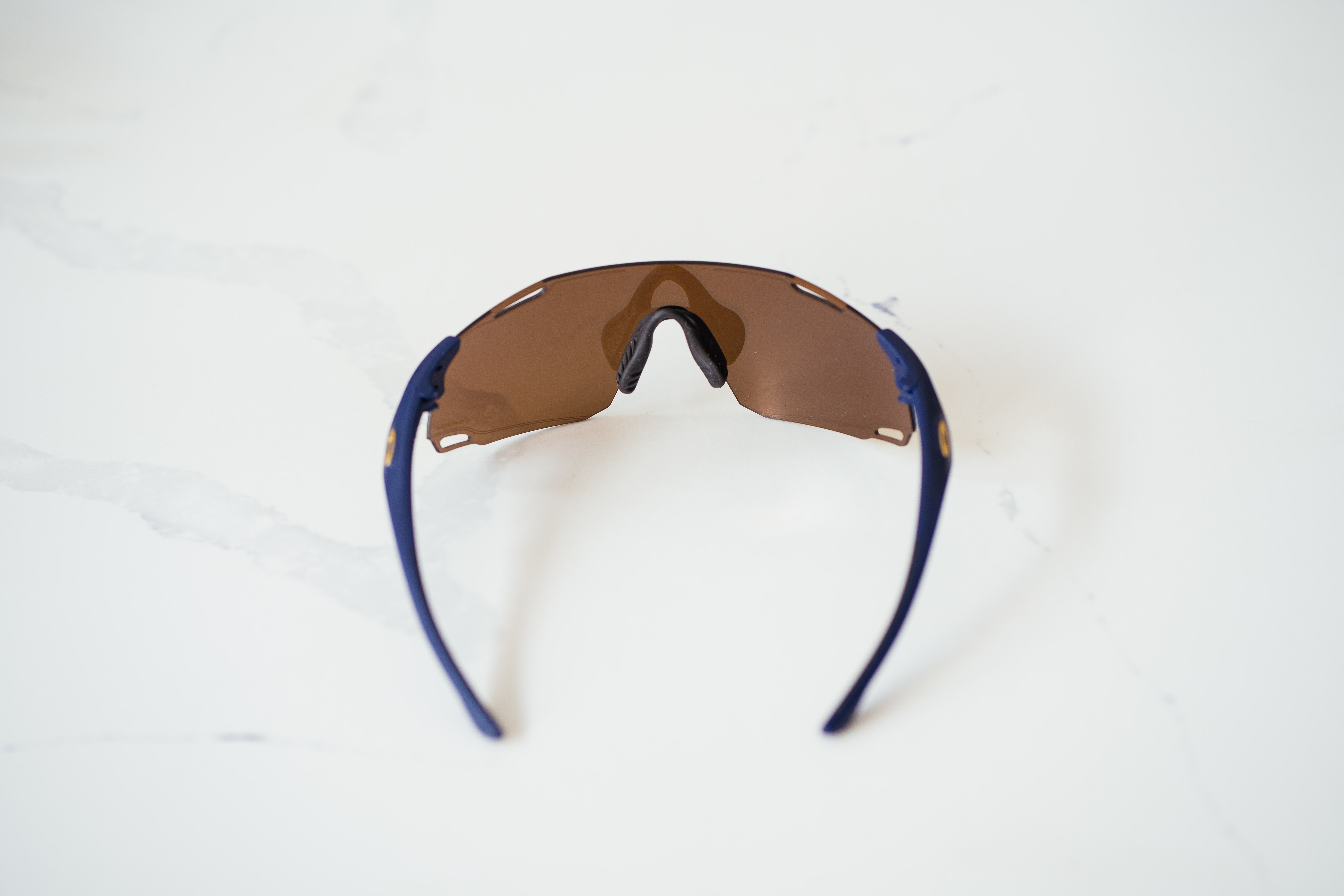
Design and aesthetics
The form of the Cybr Dyno is to all intents and purposes the same as that of the old EVZero Blades. These are a totally frameless set of cycling glasses, with a relatively modest sized lens by modern cycling standards, two slender arms attached at the temples, and a clip on nosepiece.
The lens itself is nearly identical. What I presume has happened is that Oakley took the design of the EVZero lens, and just milled out a small section along the brow, a few squared off shoulders below the nose, a couple of vents on each side, and a relatively fiddly bit beneath in the bottom left and right corners. You do also get ‘OAKLEY’ etched into the brow, and some parallel lines that give a subtle nod to a frame, without burdening you with the additional few grams.
The lens I have on test is the Prizm 24k, which is the sunniest lens in Oakley’s Prizm range, with a light transmission of 11%. For reference the Prizm Road lens, which is my favourite, allows 20% of the light to pass through, so the 24k is noticeably darker, and significantly more gold.
The arms are slender, much like those of the 100% Hypercraft, but unlike those you cannot pop them off to swap the lenses; you’re stuck with what you choose. There is a photochromic option though, if you want to be covered for all light conditions, along with a black lens, a pink low light number, and a sapphire blue option.
Unlike the EVZero Blades the arms only have a small strip of rubber bonded into the inside surface, rather than a full-surround setup, meaning it’s only grabbing against your head, rather than against your head and ears. This is fine for just walking around, but for cycling, especially if you’ve got long hair, it’s worse.
In terms of weight the Cybr Dyno weighs exactly the same as the old EVZero Blades, at 22.4g.
For those worried about stones flying up and hitting them in the face there is also impact protection with the lenses, as is the case with all Oakleys.



Performance
If you are after a light pair of cycling glasses with excellent lenses, particularly if you have a smaller face, then the Cybr Dyno is a really great option. The lenses themselves are, as you probably expect, totally clear and distortion free, though the 24k lens is a little less versatile than the Prizm Road. It’s absolutely bang on for bright sunlight, as bright as you’d ever find, but if your riding takes in lower light conditions with a degree of frequency you’ll be better off with the Prizm Road, even if it looks less… gold.
Cycling glasses tend to fall into one of two camps: close fitting, small and wrapped, or larger, off the face models. In the case of the Oakley Velo Kato it is both enormous and wrapped, but that’s an exception. Here with the Cybr Dyno it’s definitely the former, and the small lens sits close to the face. While it is frameless, and so doesn’t have chunky plastic framing where the lens ends, the smaller size of the lens does mean the edges are more in your eyeline than with larger models, more so on the lower edges than the upper.
This is all relative though, as when you’re riding at speed, and concentrating on the road ahead, the size was never really an issue. I have reviewed countless cycling glasses at this point and, being totally frank, if the lenses are decent the size is rarely ever an issue, it’s all a matter of degrees.
The nose piece here is perfectly grippy and they didn’t fall down my face, though the general retention was left wanting by dint of having less rubber on the arms. The EVZero Blades have a full sleeve that grips against your head, and your ear, but the Cybr Dyno only grabs against one's head. If you are like me and have somewhat long hair then there is often nothing to grab against, unless you physically force the arms under your hair.
Like the EVZero Blades, this is also compounded by a lens that is thinner and more flexible, and without the stiffening brim that exists on the Kato, Encoder, and Velo Kato. If you have a very small head this may pose an issue, but for me it was ok. They stayed put most of the time, though the odd adjustment was necessary. In helmets though the lack of inward grip wasn’t always the greatest.
You’d be surprised how much difference a low weight makes for cycling glasses though. I don’t mean for your next PR attempt up a hill, but from a comfort perspective. These, like the likes of the Poc Elicit, are so feathery you can sort of forget they are on your face, which definitely isn’t the case with a lot of modern, giant sunglasses.

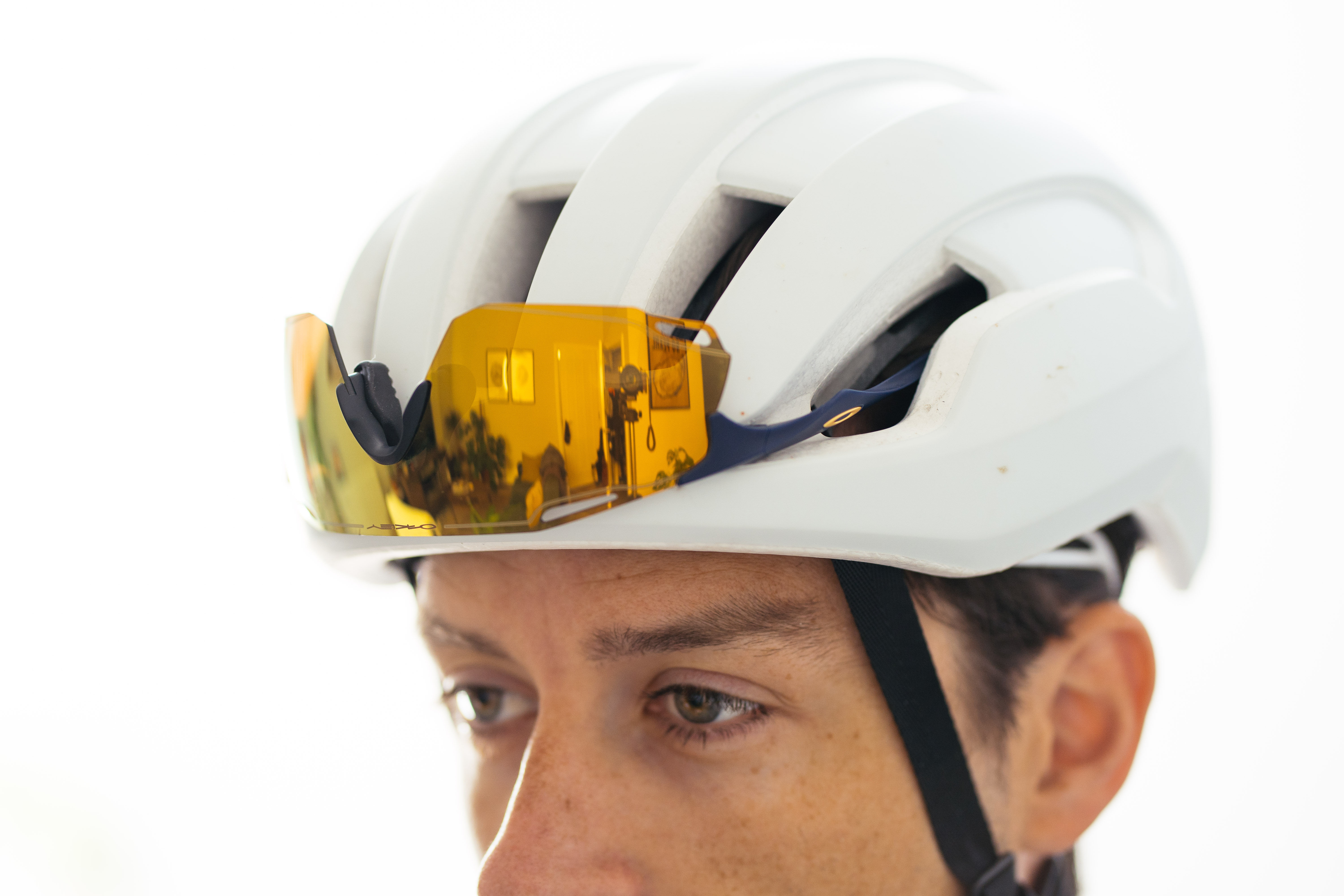
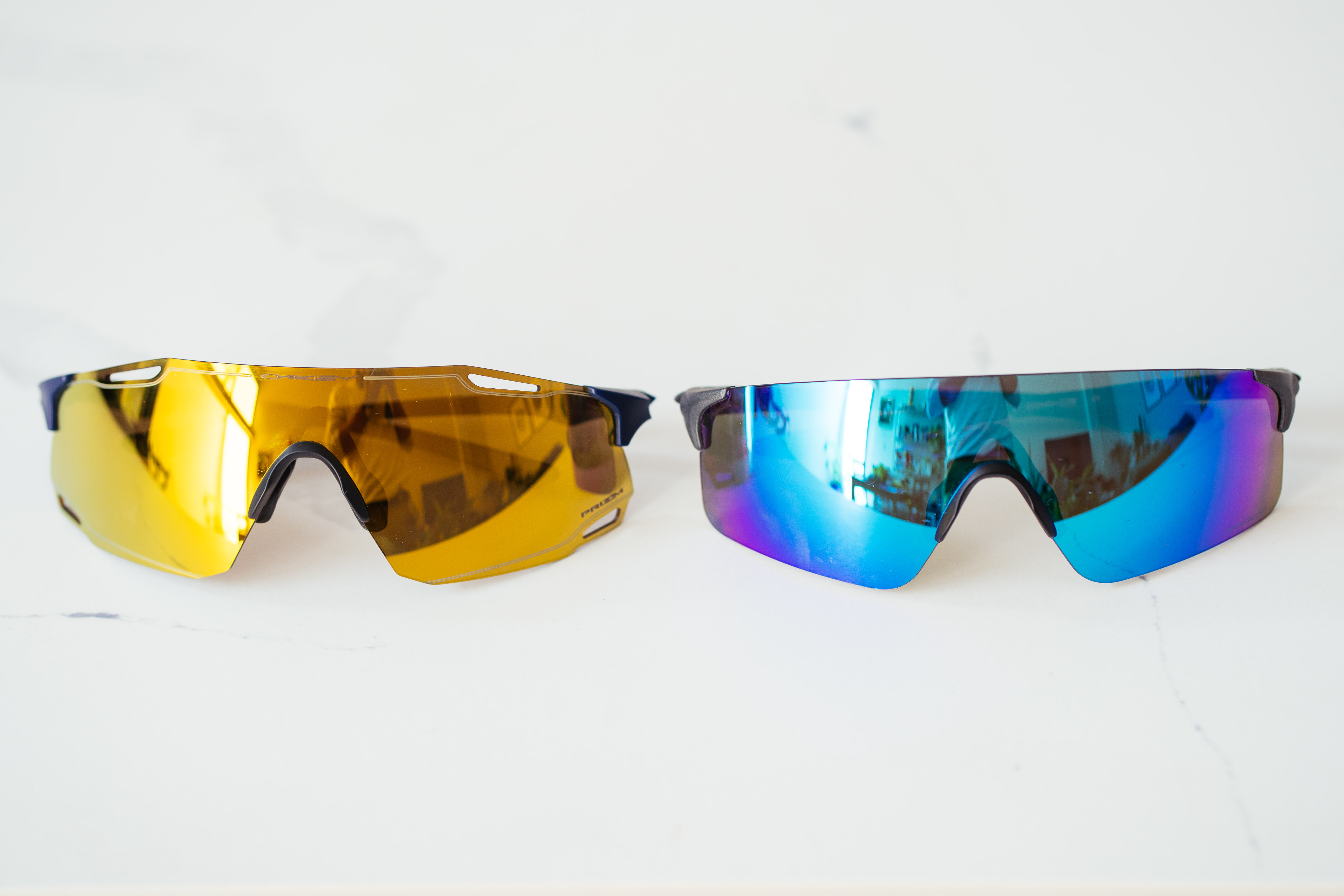
Value
I was concerned that the Cybr Dyno (and the Cybr Zero for that matter) would get the ‘new model tax’, and be more expensive than the EVZero Blades, without offering anything substantively different, but happily they cost exactly the same.
At £168/$214 they are significantly more expensive than the likes of the superlight 100% Hypercraft, and while the lenses are better you only get one whereas with the Hypercraft you get a clear lens too.
As a pair of dedicated cycling glasses they don’t perform quite as well as the likes of the Encoder or the Sutro, while being similarly priced. As a general use pair of active glasses they maybe hold a little more water, but I’d still say you can probably find better value elsewhere if you aren’t wedded to having a pair of Oakleys.
Verdict
The Oakley Cybr Dyno is a very good pair of lightweight cycling glasses, with a size that would suit those with smaller faces better than many of the giant mono lens models on the market today.
The optics are great and I think the aesthetics are decent too, but the retention is reduced versus the slightly more plain, but well established EVZero Blades. The differences are minimal however, so your decision can be led primarily by aesthetics here, rather than pure performance.
| Attributes | Notes | Rating |
|---|---|---|
| Design and aesthetics | Good looking, and perfectly sized for smaller faces. | 9/10 |
| Field of vision | Being frameless helps, but the FoV isn't quite as good as giant lens options. | 8/10 |
| Lens performance | The lens is excellent - crisp, clear, distortion free, but the 24k version is maybe a little dark for temperate climates. | 9/10 |
| Comfort and retention | So light that they are super comfy, but the arms don't grip terribly well. | 7/10 |
| Value | Good lenses, good aesthetics, and price that isn't as much as top-end Oakleys. You don't get a second lens, however. | 8/10 |
| Overall rating | 82% |







